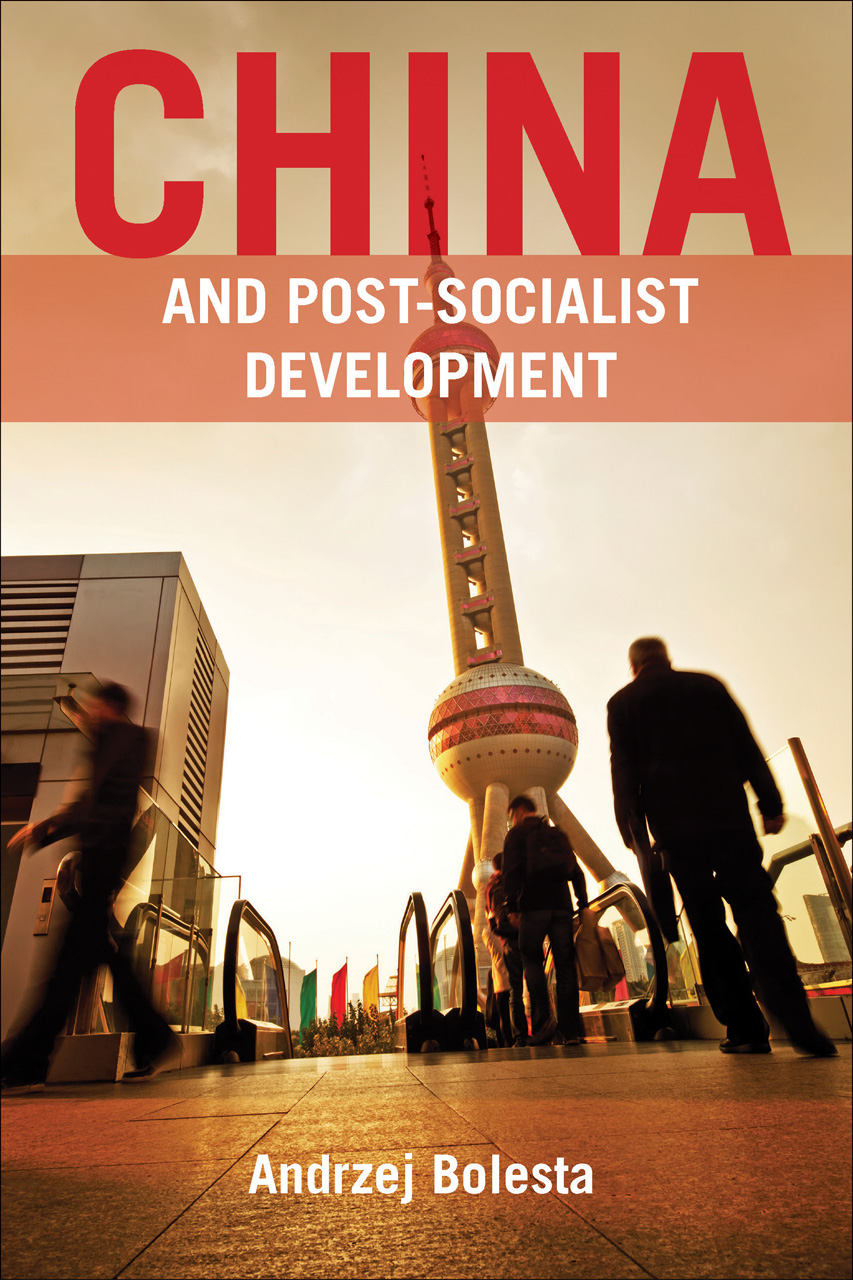China’s transformation into one of the world’s biggest economies stands as an exceptional example of economic development. China and Post-Socialist Development looks in depth at the mechanisms and factors contributing to China’s success. Indrani Lahiri applauds Andrzej Bolesta‘s work as a novel contribution to the field and finds compelling arguments on how economic nationalism has played a dominant role in China’s market economic environment.
 China and Post-Socialist Development. Andrzej Bolesta. Policy Press. 2014.
China and Post-Socialist Development. Andrzej Bolesta. Policy Press. 2014.
China and Post-Socialist Development opens with a fascinating introduction: a brief but thorough overview of the world economic transition that includes a sharp comparison between developed and developing nations, based on the theory of developmental state (DS) models. The fallacy embedded within the neoliberal economic model has unveiled as deception affecting the post-socialist transformation.
However, as Andrzej Bolesta explains, China made an effort to remain an exception and set an institutional example during the process of systematic reformulation. Instead of ‘economic contraction’, China experienced ‘significant developmental advancement’. This scholarly narrative presented by Bolesta makes the book a potential cynosure of all eyes irrespective of the academic field.
China has managed to captivate the world. There are debates on China derailing its economic policies while shifting the base from socialism to capitalism. However, this book is a real world document to show that the interpretations on China are often condensed and misleading. The book highlights and analyses the economical evaluation based on social demand which is the first of its kind in the academic world.
The theoretical fusion between the historical developmental state model and post-socialist transformation process is unique and demands applause. In the book, attention to theoretical choices to analyse China based on the DS model consistently feeds the reader. The book comprises five chapters that cover the theoretical understanding of the DS model; the post-socialist transformation in China, highlighting in particular microeconomic restructuring; and the politics of development which conspicuously develops an ideological, political, and economic narrative of China’s developmental trajectory that compares it with other Asian developmental strategies accentuating the policies of development while mainly focusing on the industrial policy. All of this makes the final chapter about China as a post-socialist developmental state all the more intriguing.
 Image credit: Xi’an, capital of Shaanxi province (Danielinblue, Wikimedia CC BY-SA)
Image credit: Xi’an, capital of Shaanxi province (Danielinblue, Wikimedia CC BY-SA)
Situating China’s economic development in a global context requires an in-depth theoretical understanding of the politics and policies of developmental states. According to Bolesta, the relational aspects of the developmental states are conditioned by the state’s developmental policies and ideology where industrialisation plays a vital role. The author then appropriately connects the question of economic nationalism to advocate the advancement of nations during the 19th and 20th centuries. The political and economic conditions attached to the formulation of socio-economic development act as a motivation for change in framing long-term policies in developmental states.
However, Bolesta articulately mentions that the implementation of the DS model cannot serve as a ‘paramount remedy’ but requires further research in respect of country specific context. China’s developmental advancements do serve as a post-socialist developmental state model that has infused the traditional ‘state-guided development’ with the ‘American system of the early 19th century, Listian political economy and the experiences of developmental states in East Asia’.
Bolesta carefully deals with the distinction between the post-socialist and post-communist transformation while addressing the question of post-socialist transformation in China in Chapter 2. The author portrays how in some states the post-socialist transformations espoused a democratic route, whereas others did not. But the post-socialist transformation, according to Bolesta, ‘in its economic-institutional form, constitutes a departure from state commands towards market economy’. China underwent post-socialist transformation yet managed to generate its own conceptual framework of reformulation and transformation in order to deal with the socio-economic transition. Therefore, an economic model envisaged by China deserves academic research as the country stands as an exception in the world.
China has seldom found a place in the literature on post-socialist transformations, as Bolesta argues. Hence, this book is extremely relevant in the way it engages with the prevailing debates and discussions centring around issues of market economy in a post-socialist transformation. The Washington Consensus in the late 1980s prescribed ten vital points for stabilising the economy, which in turn pushed many countries into economic recession. China vehemently opposed the proposition and continued to achieve high economic growth following the path of institutional reform and restructuring the state system along with extensive economic liberalisation policies. The author relates this success to China’s ‘fully institutionalised centrally planned economy’ that- though focused on building the heavy industries – continued to put similar emphasis on the agricultural sector and small-scale industries. The systematic reforms undertaken by China have facilitated self-reliance in the economy and accelerated rural development, thus obtaining infrastructural investment to further support China’s economic objectives.
Bolesta identifies that ‘China’s state-command economy created certain mechanisms, as well as institutional conditions, for the subsequent implementation of a genus of the developmental state model’. China’s experiment with market socialism and the drive to create egalitarian prosperity deserves appraisal. Again, China’s developmental objectives were directed by its strong political and ideological understanding which assisted in formulating ‘socialism with Chinese characteristics’. The centrally planned developmental objectives alongside decentralised administration marks China’s transition from ‘command planning’ to ‘guidance planning’. This has generated a ‘new institutional environment for economic activities and a new institutional platform for economic interaction’, Bolesta argues, in conformity with the World Trade Organisation (WTO) guidelines.
The most interesting part of the book is where Bolesta makes an effort to combine China’s policy dimensions and ideological background with the political and economic arrangements in chapter 3. In this chapter Bolesta concludes that economic nationalism has played a dominant role in China’s market economic environment ‘characterised by the presence of extensive interventionism to regulate the market’.
Overall, the book offers a stimulating analysis of China based of the DS model and documents a plethora of information for readers. Bolesta has set up a pioneering trend to look at China from the lens of DS and PSDS model. Finally, the book concludes on a positive note on African democratic developmental state model and emphasises that the PSDS model, in general, can be useful for post-socialist economies and not only China to define developmental trajectory. A must read for everyone interested in China and post-socialist states.
Indrani Lahiri holds a PhD in Political Communications by the University of Stirling. She is Lecturer in Public Relations within the Leicester Media School at De Montfort University. She is also the Associate Fellow at Institute of Commonwealth Studies, University of London.







